Rousing performers | How Hyundai has aced the dynamics of its cars
The fun-to-drive factor can only be valid if cars offer great dynamics and Hyundai’s transformational journey on this front is something that needs a telling
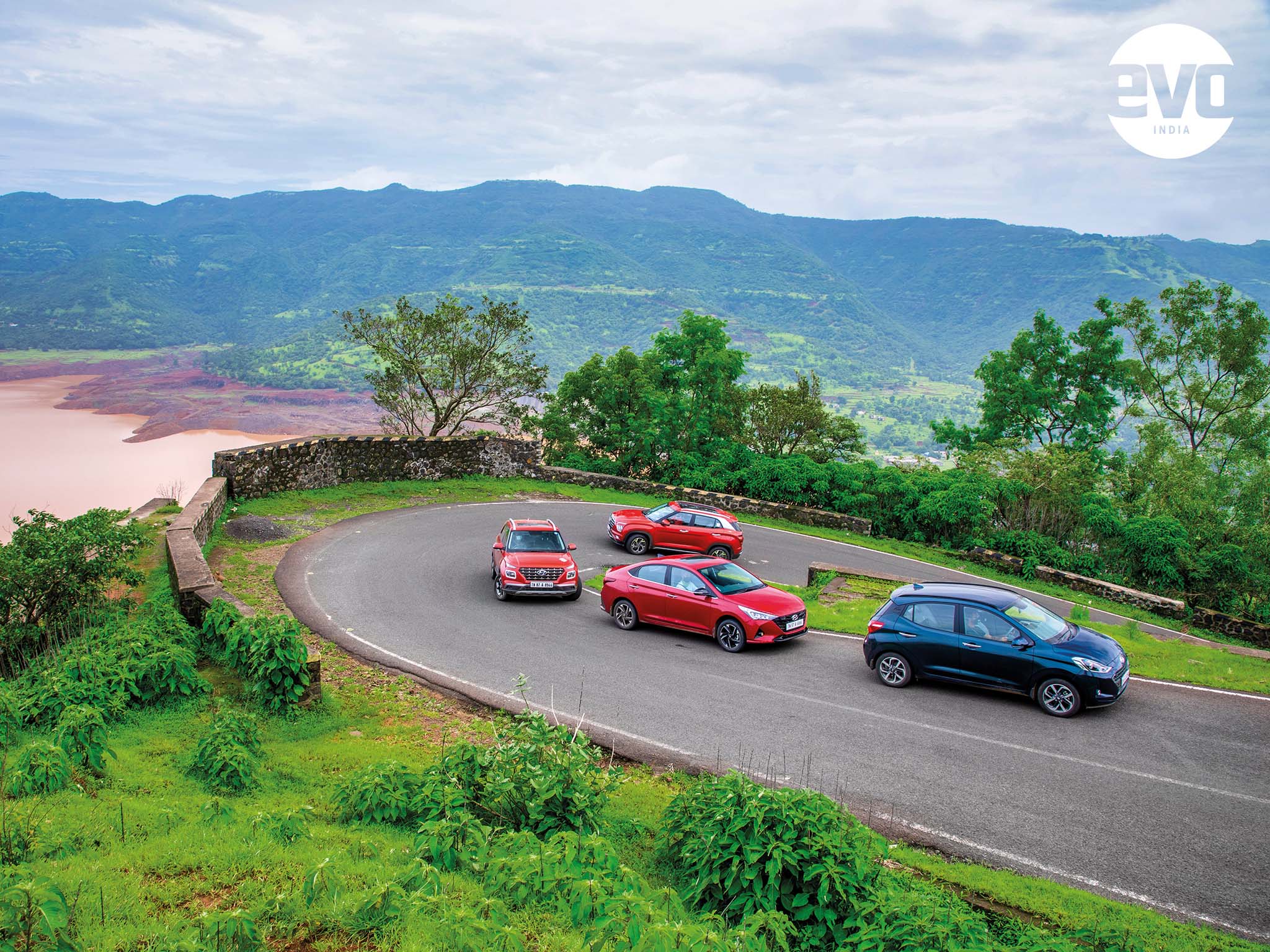 Hyundai has vastly improved the dynamics of its cars over the years
Hyundai has vastly improved the dynamics of its cars over the yearsThe Indian car buying demographic is vastly different compared to global markets. For the longest time, fuel economy and value for money have been two dominant factors influencing car buying decisions. Cars with higher fuel economy have historically drawn a mass market appeal, and offering more bang for the buck has always been a criteria for carmakers. While these two factors still remain important, car buyers’ tastes have evolved over the years. There’s now a growing community of enthusiasts and petrolheads out there. This urban audience craves more than just practicality in a car. They prefer cars that trigger emotions over ones that are simply utilitarian. Cars that are engaging to drive on open roads and fun to throw around corners. For them, driving dynamics and performance are key factors. And Hyundai has promptly risen to the occasion, polishing the dynamics of its cars and readying them for this new wave of enthusiasts.
To address this enthusiast audience, Hyundai has already introduced its 1-litre and 1.4-litre T-GDI engines in India. These new turbocharged, direct injection engines optimise fuel economy and performance, proving that bigger isn’t necessarily better if you are aiming for better performance. We have reviewed these engines and we know that they do deliver the thrills. But what’s worth appreciating even more is that Hyundai has harnessed this performance efficiently by progressively improving the ride and handling of its cars. The new Grand i10 Nios is a significant step-up on the dynamics front and the trend continues as you move up the order in Hyundai’s portfolio. The new Verna packs better dynamics than the one it replaces while the new Creta feels far more tied down at high speeds. Even new SUVs like the Venue have nailed this formula. So let’s delve deeper, using excerpts from our reviews and comparison tests from the recent past, to understand how the dynamics of Hyundai cars have vastly improved.
Grand i10 Nios
The Grand i10 Nios was launched as a replacement to the aging Grand i10, and it is the segment benchmark for features, quality and space. Hyundai has worked hard on the suspension and chassis as well, to make it a better handling car. An excerpt from Ed Sirish Chandran’s first drive review says, “The Grand i10 Nios is now more polished on the highway and doesn’t get thrown around by crosswinds or even bumps. There is a touch of firmness which is evident in the city where you can feel small ruts and dips — it doesn’t crash into them uncomfortably, but you can feel it — but that tightness in the suspension ensures it doesn’t wallow or gets tossed around on the highway.”
Earlier, hatchbacks were purely budget cars with a utilitarian appeal. Now, enthusiasts look forward to owning hatchbacks for thrills and that's why Hyundai even offers the Grand i10 Nios with a 1-litre turbo-petrol engine that makes 98bhp and 172Nm of torque. To match this performance, Hyundai has tuned its suspension for improved dynamics. The chassis too is stiffer and stronger thanks to the generous use of Advanced High Strength Steel (AHSS). It is superbly planted at triple-digit speeds on the highway and is equally confidence-inspiring around the twisties. It won our comparison test against the Maruti Suzuki Swift with its improved ride and handling playing a significant role in making it the winner.
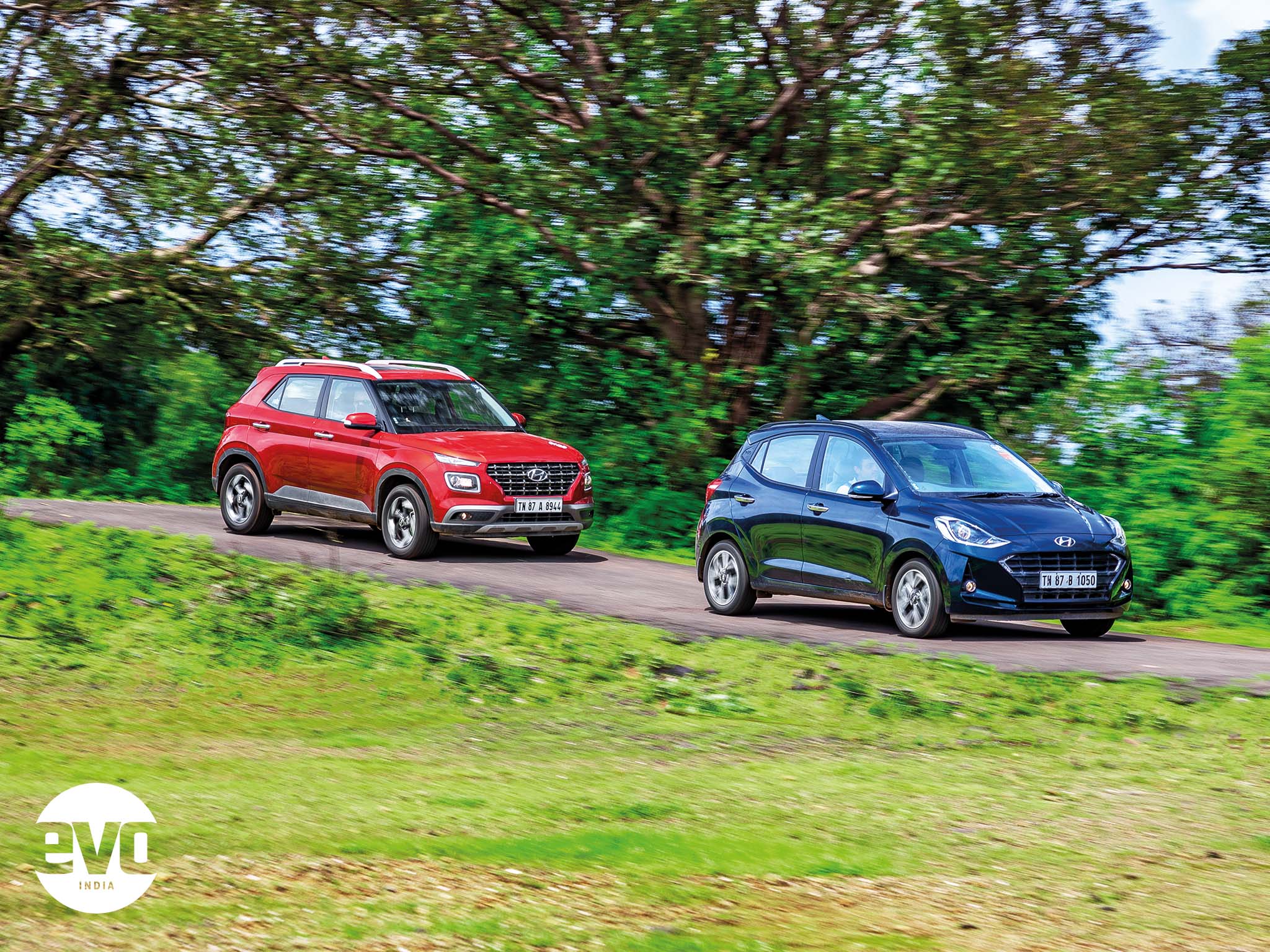 Ride and handling of the Grand i10 Nios has vastly improved
Ride and handling of the Grand i10 Nios has vastly improvedVenue
The Venue enters a segment Hyundai were not present in before — the Grand i10 Nios, Verna and Creta are all successors to older generation cars. And that shows in the dynamic polish of the Venue. We drove the Venue in the hills of Guwahati and it tackled bad roads and twisties brilliantly. Commenting on the Venue’s excellent ride and handling set up, the Ed wrote in his first drive review, “The steering on the Venue is one of the nicest Hyundai has done, it is not overly light nor is it completely devoid of feel. Next you notice the ride and how comfortably the Hyundai Venue tackles the indifferent roads in this part of the country. It also sports enthusiastic road manners, going around corners at a fair clip with body control well in check. There is a bit of body roll to go with the comfort tuned into the suspension but for a compact SUV, the body control is surprisingly tight and controlled.”
That perfectly explains what makes the Venue so great dynamically. It is a compact SUV that handles like a hatchback! Tall cars naturally tend to wallow around corners, but the Venue’s chassis is so well engineered that it breaks the norm of SUVs failing in the handling department. It feels composed around bends and on the highway, at triple-digit speeds, it feels stable. Even over broken tarmac, the pitch and roll is well contained. The Venue diesel is a part of evo India’s long-term fleet and the petrolheads from our team are always eager to take it out for a spin.
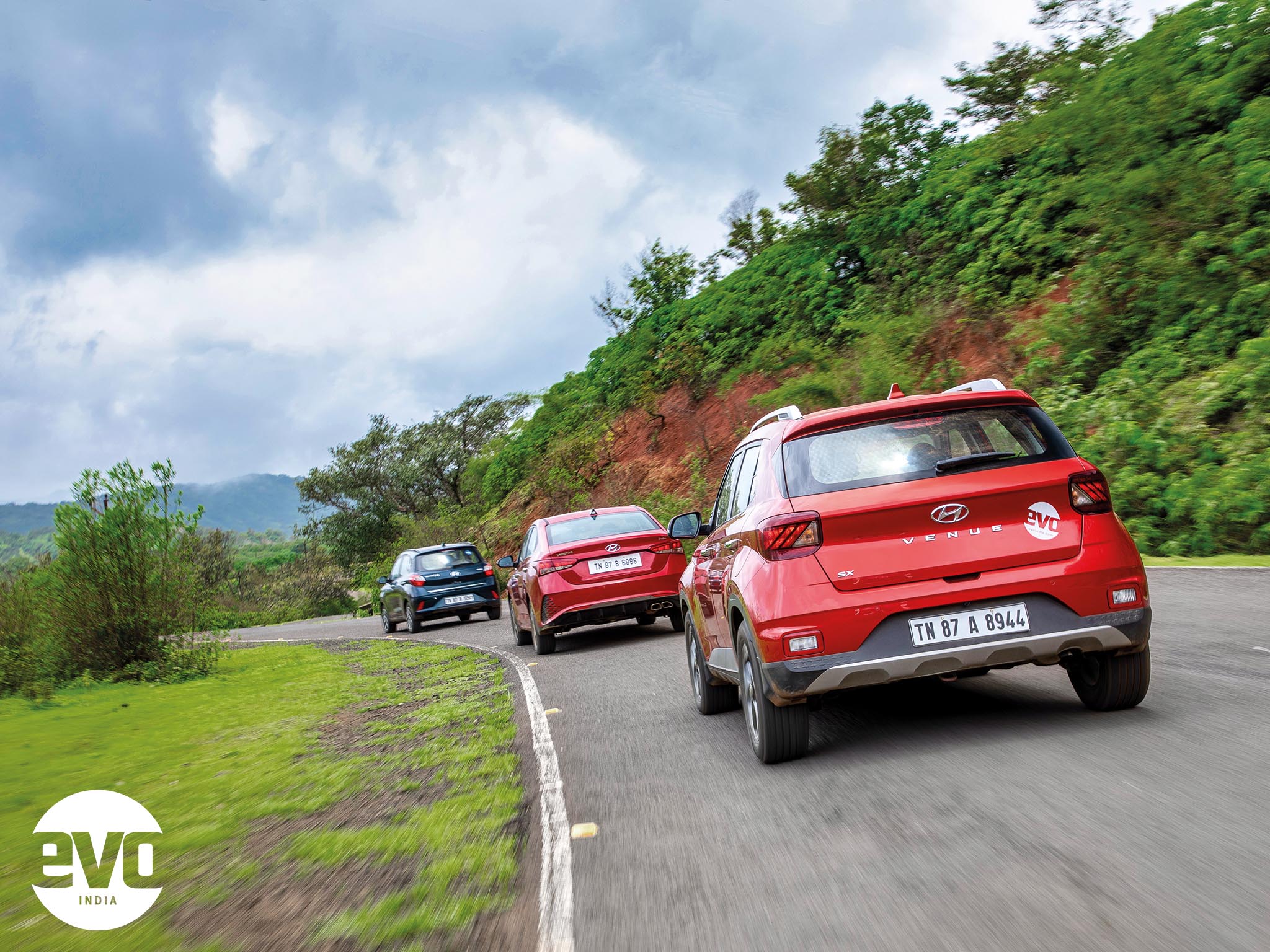 A different breed from before
A different breed from beforeVerna
The Hyundai Verna has been around since 2006 and is a name familiar to sedan lovers in the country. Over the years Hyundai has improved the Verna and the sedan is now properly polished. The most important of all upgrades is the new Verna’s revised suspension set up that makes it even more planted. We got behind its wheel recently, and the Ed praised it in his review, quoting, “You immediately notice the upgrades to the suspension, which has an even more European feel to it in the firmness of the damping and the more precise rebound. The ride isn’t too soft or squishy with the nose staying planted and not bouncing about on undulating roads. Floaty suspension is a thing of the past as far as Hyundai is concerned.” Over India’s poor roads, the Verna’s pliant suspension strikes a great balance between a comfortable and a sporty ride. It is composed while ironing out bad patches and you can exploit its performance thanks to its solid and robust underpinnings. Throw it into corners and the front end bites well and turns in sharply. Low slung and sporty sedans like the Verna will always handle better than SUVs, and the Verna Turbo is one of the best-handling Hyundai cars on sale currently
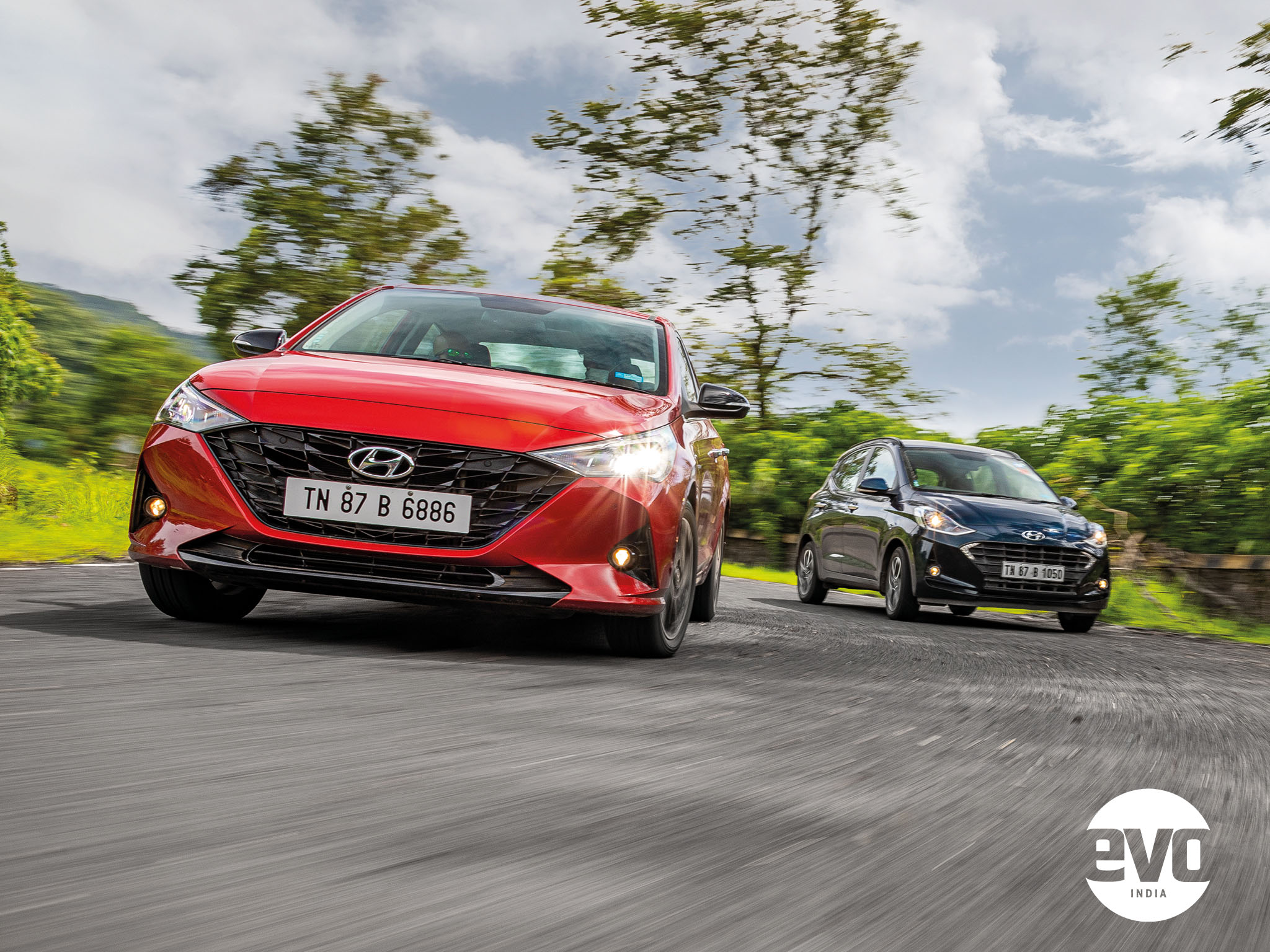 Hyundai cars love the twisties now than they did ever before
Hyundai cars love the twisties now than they did ever beforeCreta
Over 5 lakh units of the Creta have been sold since it was first launched. The older generation Creta was a best-seller and the new Creta is building on the success of its predecessor. Significant upgrades in the Creta include its heavily revised suspension set up. It now feels more planted and stable on our roads. In fact, the Ed thinks that the ride of the new Creta is now very similar to European SUVs. He drove the new Creta just days before the lockdown began and he said, “The ride quality has this European setup to it where you do feel small ripples in the road but as you pick up speed it stays unaffected by bumps on the road, doesn’t wallow or float, the nose doesn’t dive and you can drive it hard and fast over smooth and not-so-smooth roads.”
The popularity of SUVs is justified by the omnipresence of poor roads in our country. SUVs provide peace of mind and certain levels of assurance while tackling bad roads and broken paths. The Creta provides tremendous confidence on this front. Recently, we pitted the new Creta against its rivals and even SUVs half a segment above and it emerged as the winner. Its planted and stable nature makes it tackle road undulations with poise and it’s absolutely unaffected by little bumps that would otherwise unsettle its softly sprung predecessor. It instils the feeling of an SUV that is comfortable and composed. The well-weighted steering and the sophistication of the ride quality make it one of the best SUVs that you can buy for under Rs 20 lakh and with the competition in that segment, that's saying something.
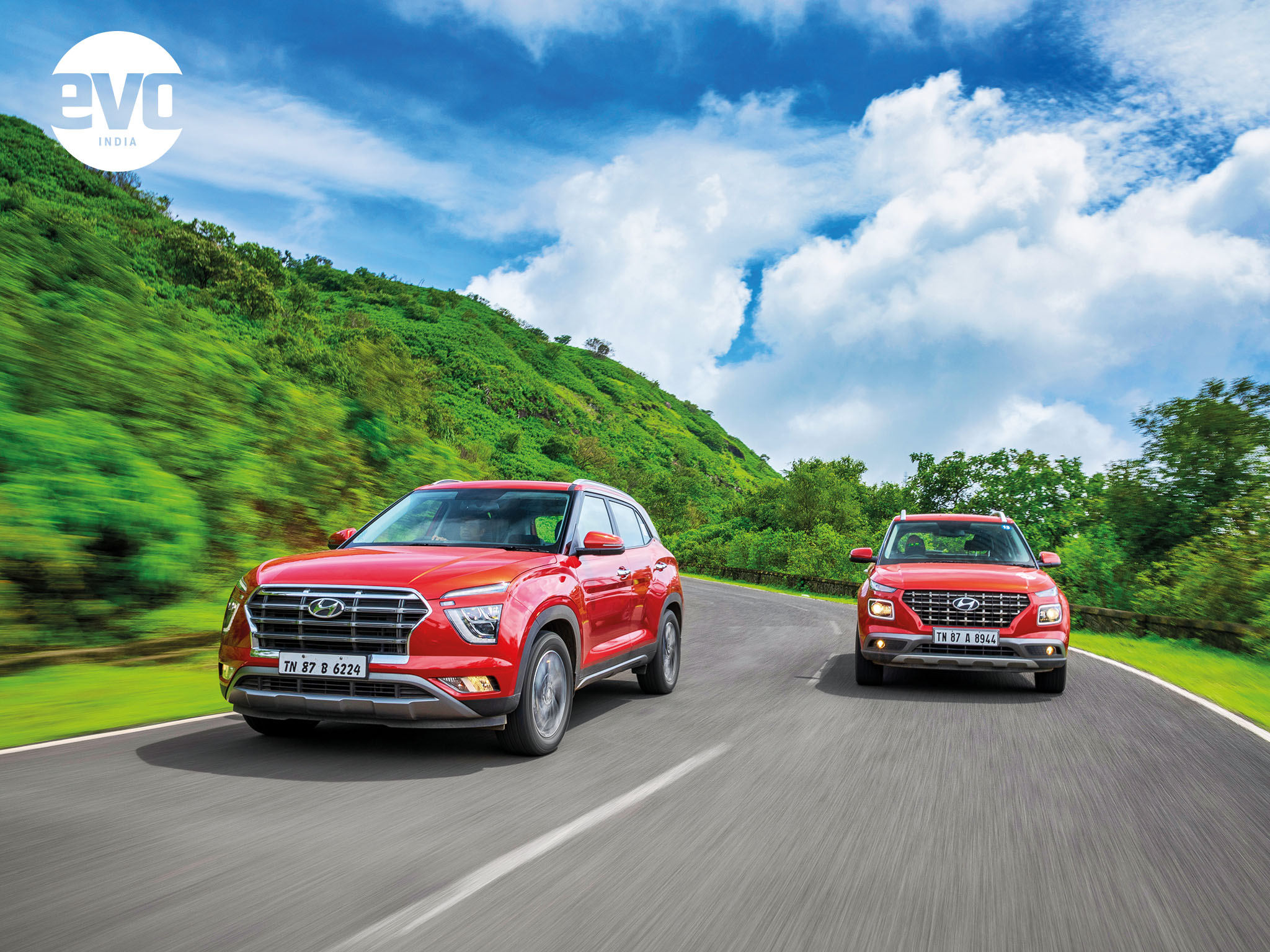 The SUV duo is absolutely dominating the sales charts
The SUV duo is absolutely dominating the sales chartsThe improvements on the ride and handling front are so significant that one can describe this transition as a proper transformation, one that has redefined Hyundai’s brand image as a provider of fun-to-drive and enthusiast-friendly cars at affordable price tags, without compromising on other key parameters like comfort, space, features and fuel economy. India is Hyundai’s largest overseas production base and that has made the brand monitor and cater to the evolving local needs. And the result is in front of your eyes. Light steerings and soft suspensions are a thing of the past and what you have now are cars that can put a smile on your face. Modern Hyundai cars are some of the most well-rounded and well-packaged offerings in India and are fine examples of accessible performance thanks to their improved dynamics.


